
Chimpanzee playground and birder's delight


Uganda is often called the “Pearl of Africa” but within this gem lies a real nugget: Budongo Central Forest Reserve. This enchanting forest reserve offers a blend of biodiversity, rich history, and natural beauty. Nestled in the heart of Uganda, where the equator crosses the African continent, Budongo Central Forest Reserve offers a sanctuary for nature lovers and adventurers.
Often overshadowed by the country’s more famous attractions, this remarkable reserve is a place where biodiversity thrives and history whispers through the trees. As part of the larger Murchison Falls Conservation Area, Budongo is a testament to nature’s resilience and the perfect destination for those seeking the tranquillity of forests, the thrill of wildlife encounters, and the beauty of cascading waterfalls.
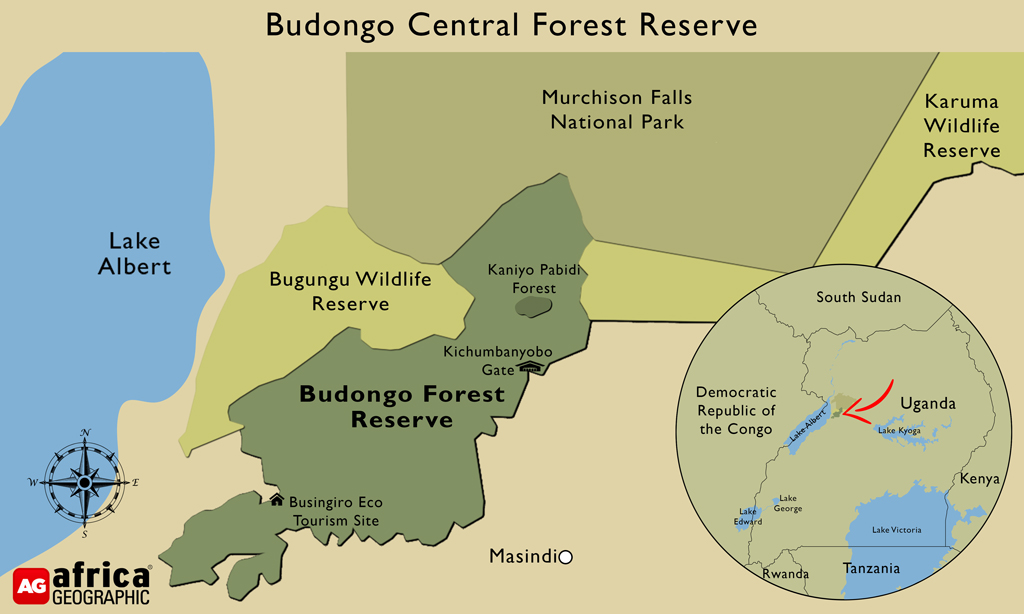
Budongo Central Forest Reserve: where history and wildlife meet
A 4–5-hour drive northwest of Kampala, Budongo Central Forest Reserve offers an enticing blend of natural wonders. All who venture here are captivated by its landscapes and vibrant ecology. This forest reserve first received conservation attention in the late nineteenth century because of its importance in the area’s water provision and natural resources.
Nestled in western Uganda, Budongo is a sanctuary within the larger Murchison Falls Conservation Area. It once served as a royal hunting ground for Bunyoro kings, a tradition that harkens back long before the days when protection of special areas became a necessity. Today, the reserve comprises six distinct forest blocks: Siba, Waibira, Busaju, Kaniyo-Pabidi, Biiso, and Nyakafunjo, all managed by the Uganda National Forestry Authority (NFA).

A natural wonderland awaits in Budongo
Located where seven of Africa’s biogeographical regions converge, Uganda is a tiny landlocked country with enormous potential. Despite its small size, Uganda has an extraordinary diversity in both terrestrial and aquatic habitats. Among these is Budongo, whose expanse spans 825km2, and unfolds across a landscape of two main vegetation types. About half of the conservation area comprises moist, medium-altitude, semi-deciduous forest, the other half is a mosaic of savannah and woodland patches. This lends greatly to the biodiversity of the region.
The forest undulates westward and down towards the East African Rift Valley, and four life-giving streams – the Waisoke, Sonso, Wake, and Bubwa crisscross the forest. These streams flow into Lake Albert, the northernmost chain of lakes in the Albertine Rift. In the northeast, on the border with Murchison Falls National Park, Kaniyo Pabidi Waterfall adds to the picturesque scenery.
As moist air rises above the Rift Valley mountains, it condenses, cools, and falls on the verdant Budongo region, amassing between 1200–2200mm annually in two rainy cycles. March to May and September to November are wet, while the forest receives a respite from the rain from December to February.
Dominating the Budongo Forest is a canopy of Uganda ironwoods, which provide a sanctuary for a rich tapestry of flora and fauna – and the habitat of some of the region’s special birds. The towering East African mahogany trees prevail physically, with some old specimens standing eighty metres tall. Other important forest species of conservation concern are the drum tree, wild mango, African teak and the vulnerable tiama. Reaching for the skies, these combine to create an enchanting and mystical atmosphere below. Sunlight gently filters through the dense canopy, casting dappled light on the forest floor.
Whether you seek the serenity of a tropical forest stroll, the thrill of wildlife encounters, or the mesmerising beauty of cascading waterfalls, Budongo offers an unforgettable destination.


Budongo’s birds
The reserve is a haven for an astonishing variety of wildlife, with birds being one of Budongo’s top drawcards. Around 366 bird species grace Budongo, including sixty West or Central African bird species known from fewer than five locations in East Africa.
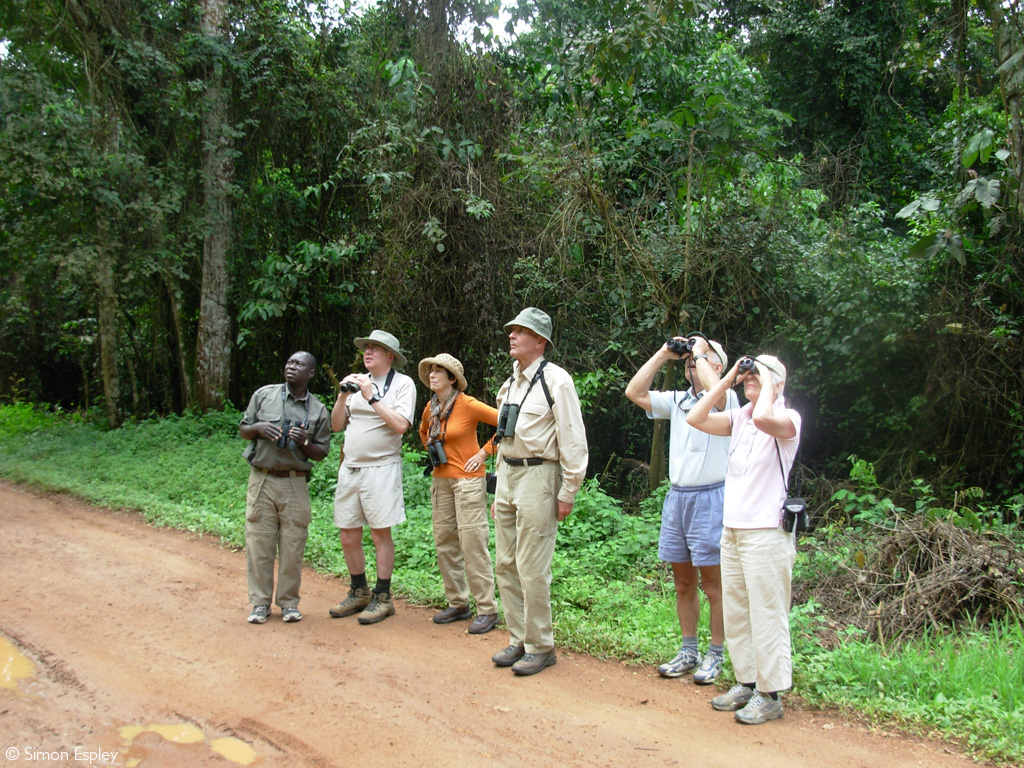
Specials that are found nowhere else in East Africa include Puvel’s illadopsis and the yellow-footed flycatcher. Other regional specials include Ituri batis, lemon-bellied crombec, white-thighed and piping hornbills, black-eared ground thrush, rufous-sided broadbill, Cassin’s spinetail, green-breasted pitta, Woodhouse’s antpecker, blue-breasted and chocolate-backed kingfishers, little green sunbird, Sabine’s spinetail, white-spotted flufftail and yellow-crested woodpecker. More regular sightings include great blue, Ross’s, black-billed and white-crested turaco, African pied wagtails, lemon-throated and Cameroon sombre greenbul, and various species of eagles, camaropteras, cuckoos and sunbirds.
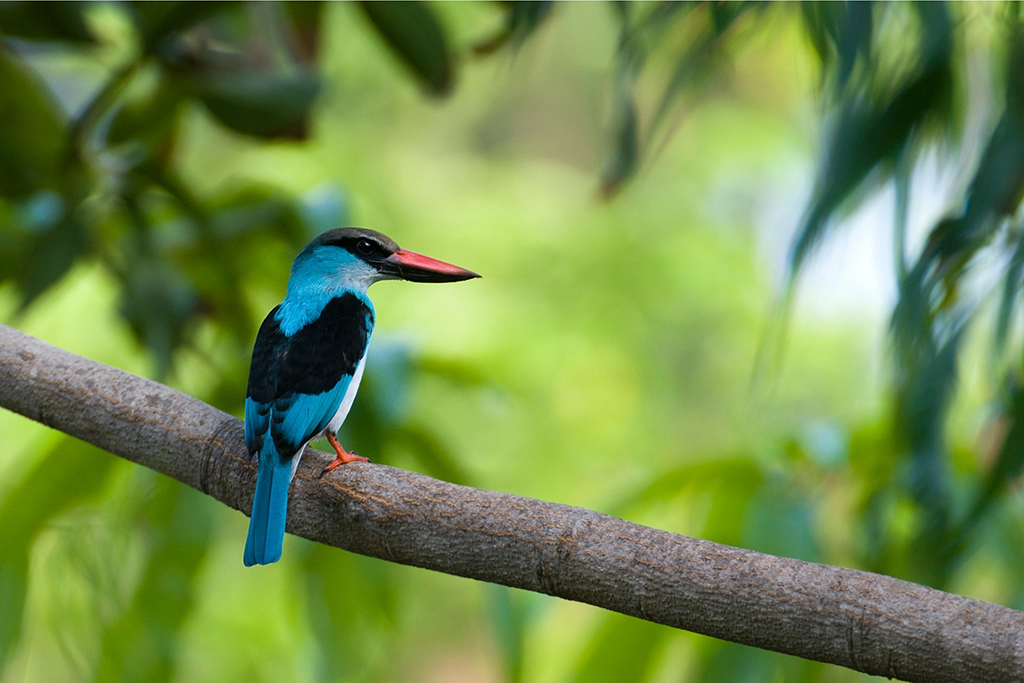
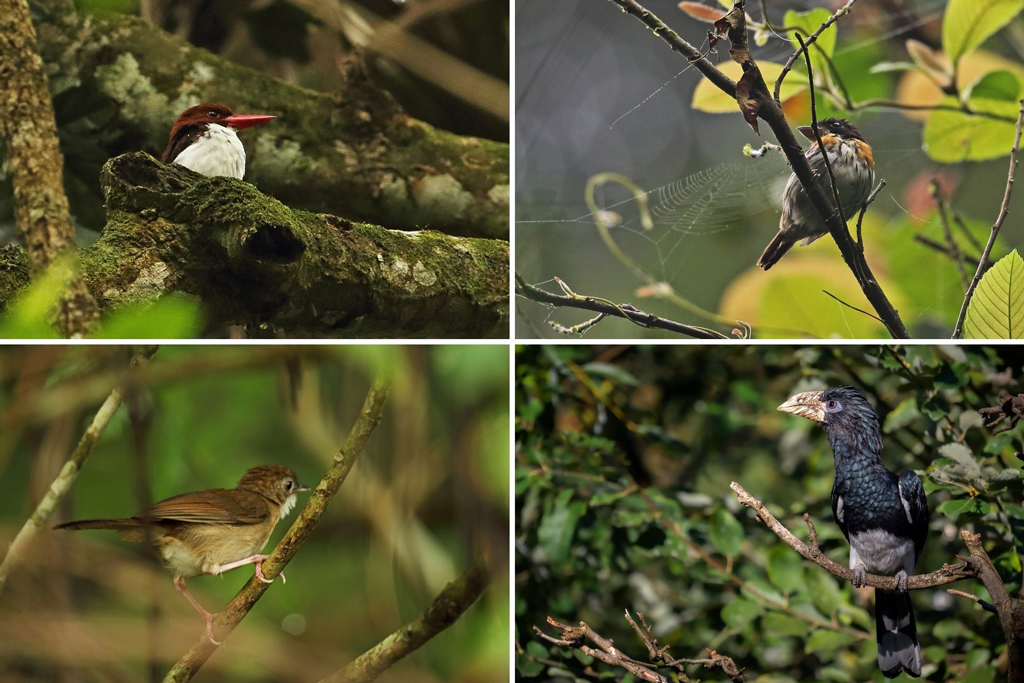
Birders will do well to visit Busingiro Eco Tourism Site, which is a good departure point for birding. The site includes the Royal Mile which is lined by giant trees representing many species found in the reserve.
Budongo is not a season-dependent destination, and birding is good year-round. However, it is advisable to consider the rainy and dry seasons based on your goals. The best birding is to be had from February to April and again from June to September when the trees are fruiting abundantly and birds are in their breeding plumage. Heavy rains in April and May and again in September and October may hamper your activities with slippery trails and impassable roads.
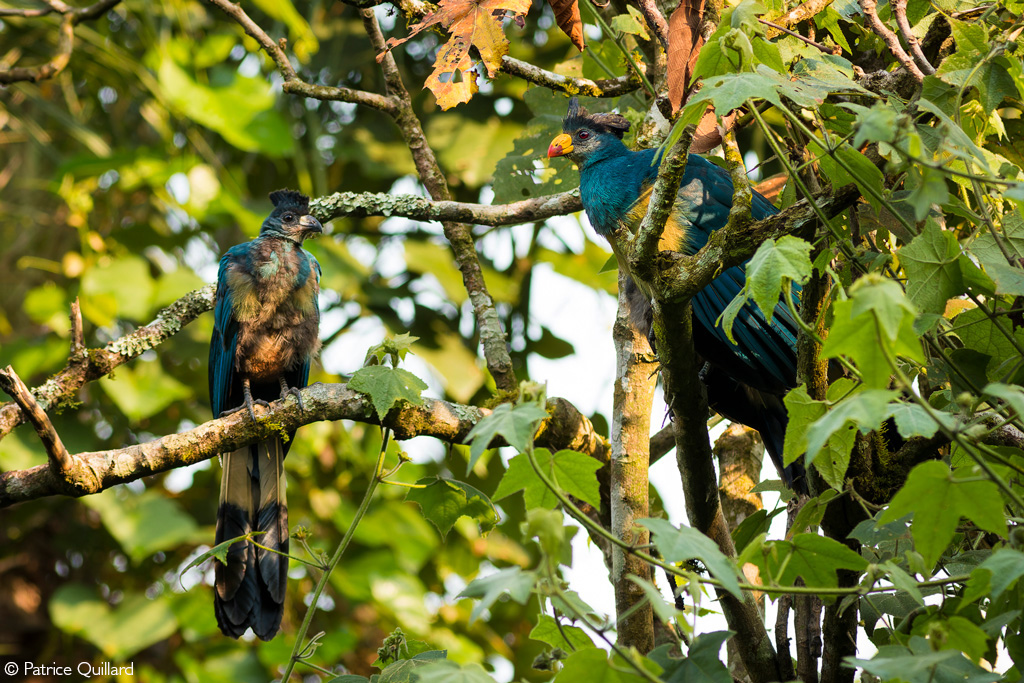
The primates and other wildlife of Budongo
Thriving in the forest habitat are good populations of eastern chimpanzees, black and white colobus monkeys, red-tailed monkeys, blue monkeys, grey-cheeked mangabeys, olive baboons, and potto and galago species.
On the forest floor, one may catch a fleeting glimpse of the chequered elephant shrew or perhaps a gaboon adder. The forest giant squirrel, the largest tree squirrel species in Africa, is high in the canopy overhead. Leopards reside in the forest but these are difficult to spot, and occasionally, lions may wander into the forest, though are very rarely seen here. Heading out of the forest into the savannah area of the reserve, elephants and buffaloes are occasionally spotted. Antelope are of the more regularly seen mammals in the forest, including waterbuck, duiker and bushbuck.

Chimpanzee trekking in Budongo
Within the forest confines are several wild chimpanzee troops, totalling upwards of 600 individuals, each with differing levels of exposure to human activity. Of these, three troops are being continuously studied and monitored by the Budongo Conservation Field Station – the Waibira, Sonso and Kaniyo-Pabidi communities. Currently, chimpanzee treks focus on visiting the Kaniyo-Pabidi community.
The Sonso community (consisting of upwards of 85 chimpanzees) were the first of Budongo’s chimpanzees to be habituated, and this painstaking and delicate work started in 1990. To reduce pressure on the Sonso clan and to gain comparative information, researchers first approached another troop, the Waibira, for habituation in 2011. Today, the Waibira consists of between 100 and 120 individuals, of which 76 are known by name. The Sonso and Waibira communities are subjects of various research projects and are therefore not currently visited by tourists.
Visitors can instead go on a chimpanzee trek to see the Kaniyo-Pabidi chimpanzee community, consisting of 100 individuals, which roams the area between Budongo Forest and Murchison Falls National Park. This community was initially habituated by The Jane Goodall Institute. Since 2009, the program has been adopted by Budongo Eco Lodge, which manages it today. Visitors trek with guides to find these chimpanzees, and once they are located (which may take between 30 minutes and 4 hours and up to 8km), trekkers spend an hour in close proximity to the troop, observing them playing, feeding, and napping.
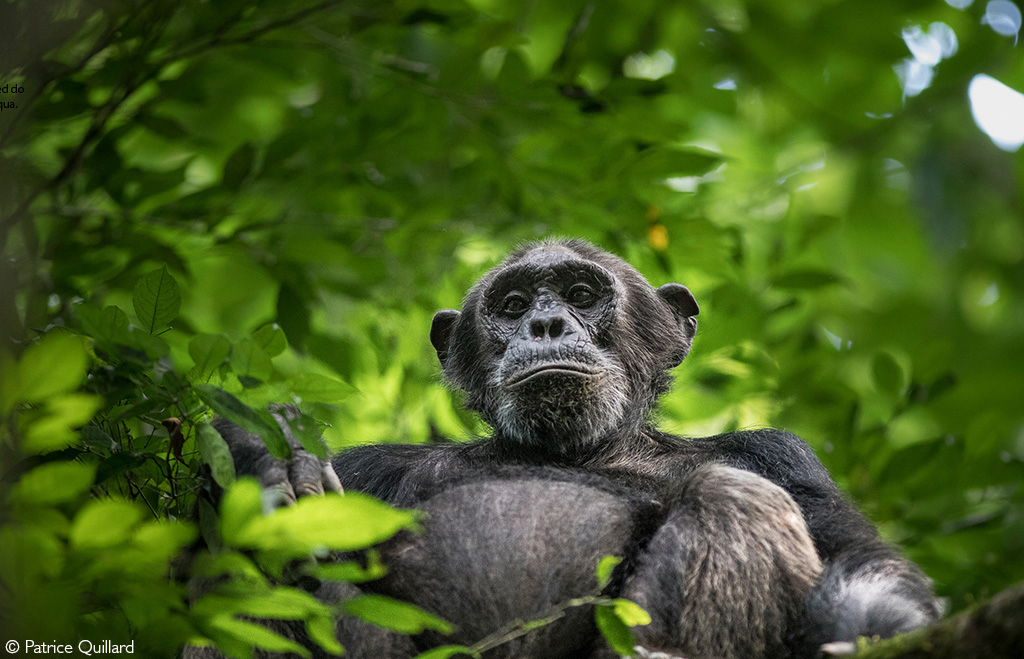
Beyond the Sonso, Waibira and Kaniyo-Pabidi communities, at least three other chimpanzee communities are found in Budongo. These are the Busingiro, Nature Reserve and Waisoke communities. These three troops remain unhabituated.
Budongo offers the unique opportunity of a chimpanzee habituation experience, which allows visitors to assist in the process of acclimating chimps to the presence of people. The experience entails following one of the unhabituated troops for a few hours under the guidance of professional guides, and observing and recording their behaviour. The troops are much more difficult to find than the habituated ones as they move deeper in the forest (and the experience may sometimes last for a whole day due to the time spent finding the chimps). Still, the challenge lies in the thrill of tracking and encountering one of the world’s most iconic species while immersed in their forest world. The process of chimpanzee habituation can take 2–3 years at a time, and these habituation experiences assist in the process.
This experience is recommended for those who wish to spend more time observing the interactions and behaviour of chimpanzees. Permits for the habituation experience are more expensive and are not issued during the peak tourism season from July to September when trekking adventures are given priority. With this permit, you may spend up to four hours with the chimpanzees, gaining a deeper understanding of their daily routines and lives in the forest. This unparalleled experience allows you to move with these incredible creatures, observing how they feed, rest, and communicate.
All chimpanzee experiences are expertly managed by operators working under the authorisation of the Uganda Wildlife Authority and the National Forestry Authority, and obtaining permits is essential.
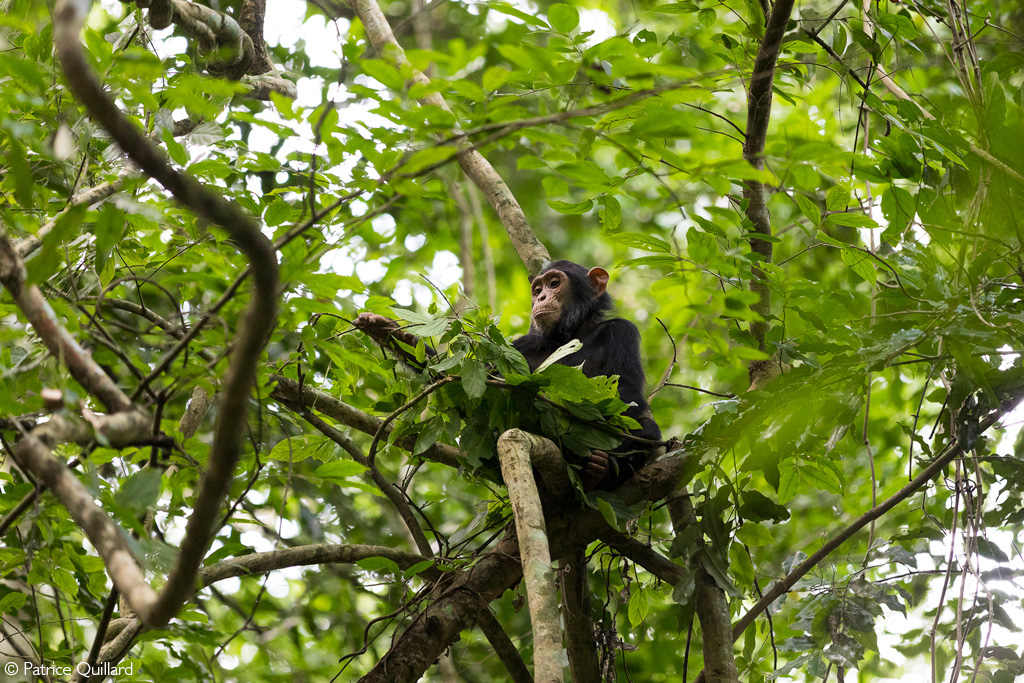
As you prepare for your adventure in Budongo, remember that heading out on an experience to see chimpanzees can be physically demanding, with varying conditions and terrain. The forest is often steep, and there are no marked paths. Be sure to take good walking shoes, plenty of water, a camera and binoculars.
Explore and stay: Planning your visit
The nearest central town to Budongo is Masindi, located approximately 20km east of the forest region. You can get there easily by bus or private car. For those that prefer to fly, though, flying to Pakuba and Bugungu airfields in Murchison Falls from Entebbe International Airport is an option, which will reduce your travel time to Budongo to around an hour. Murchison Falls is a worthwhile stop for wildlife enthusiasts and could yield exciting sightings – such as of lions and elephants – so be sure to spend some time here if possible.
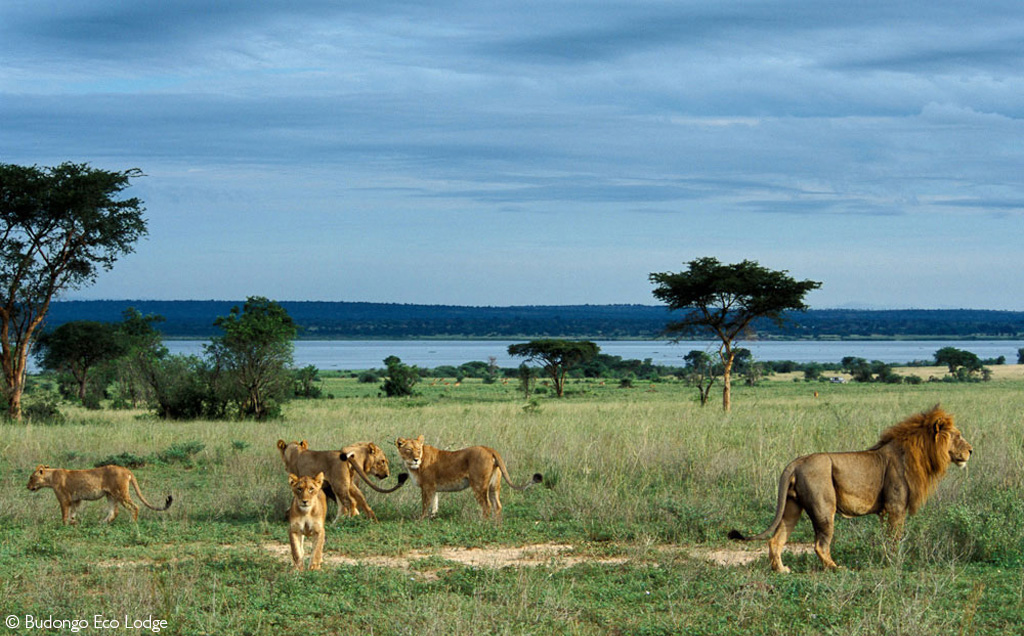
For those seeking a more immersive experience, eco-lodges and tented camps on the outskirts of the reserve offer a chance to stay much closer to nature. While visiting Budongo, make the most of your visit, and consider arranging a guided tour with experienced guides familiar with the forest’s flora and fauna. They will enhance your experience by sharing their knowledge and ensuring safety during activities like chimpanzee tracking. Securing a permit is a must before you embark on your trip.
 Are you keen to embark on your own trip to this epic safari destination? Check out our safaris to Uganda here. Alternatively, check out our chimpanzee-trekking safaris here. You can also choose from ready-made safaris or ask us to build one just for you.
Are you keen to embark on your own trip to this epic safari destination? Check out our safaris to Uganda here. Alternatively, check out our chimpanzee-trekking safaris here. You can also choose from ready-made safaris or ask us to build one just for you.
The dry season, from December to February and June to August, is generally a good time to visit Budongo (unless searching for specific bird species – see above). During these months, the weather is more predictable, and wildlife is often easier to spot as they congregate around water sources.
As you explore Budongo, remember to adhere to responsible tourism practices. Be sure to minimise your impact on the environment and wildlife. Respect the forest’s tranquillity and fragility, stay on designated trails, and tread lightly in this special place so all coming after you may enjoy it, too.
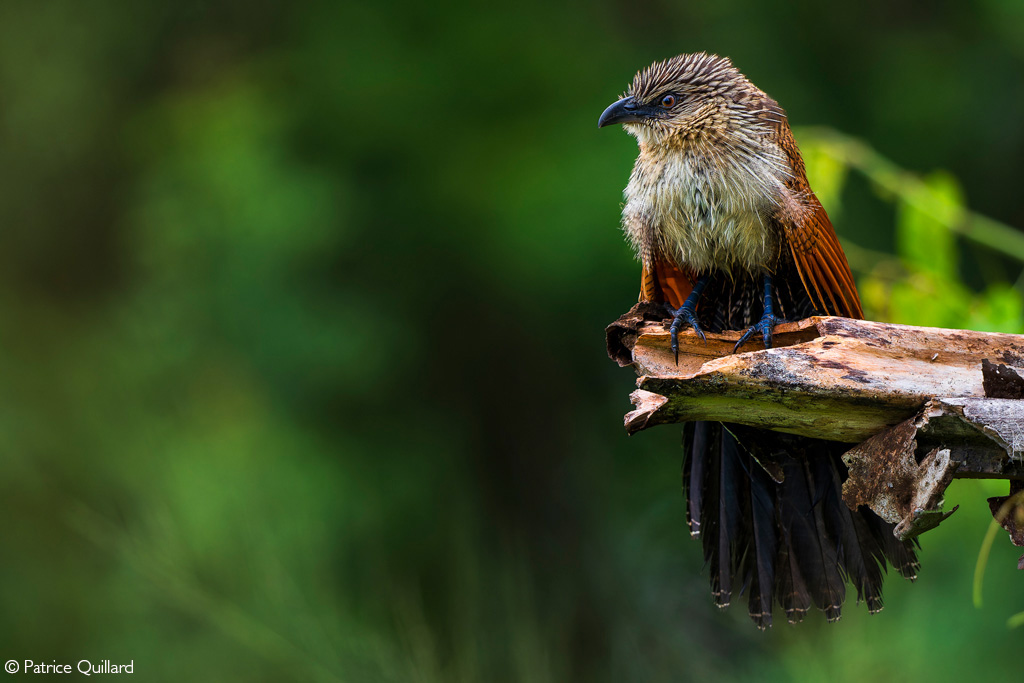
With its blend of wildlife, scenic landscapes, and conservation success stories, Budongo Forest stands as a testament to the importance of preserving our natural world for future generations. For anyone seeking an unforgettable adventure in the heart of Africa, Budongo is where the whispers of the wild truly come to life.

Further reading
- Uganda’s Murchison Falls NP is home to a smorgasbord of wildlife and diversity set against the backdrop of the spectacular Nile River. Read more about Murchison Falls National Park here.
- What are the 10 best birding spots in Uganda? The country hosts 1065 species – the ideal place to improve your life bird species list. Read more about Uganda’s top birding spots here.
- Chimpanzees live in western and central African primary and secondary woodlands and forests, farmland and fallow oil palm plantations. They are the smallest of the great apes and our closest living relative. Read more about chimpanzees, our forest kin, here.
To comment on this story: Login (or sign up) to our app here - it's a troll-free safe place 🙂.![]()




